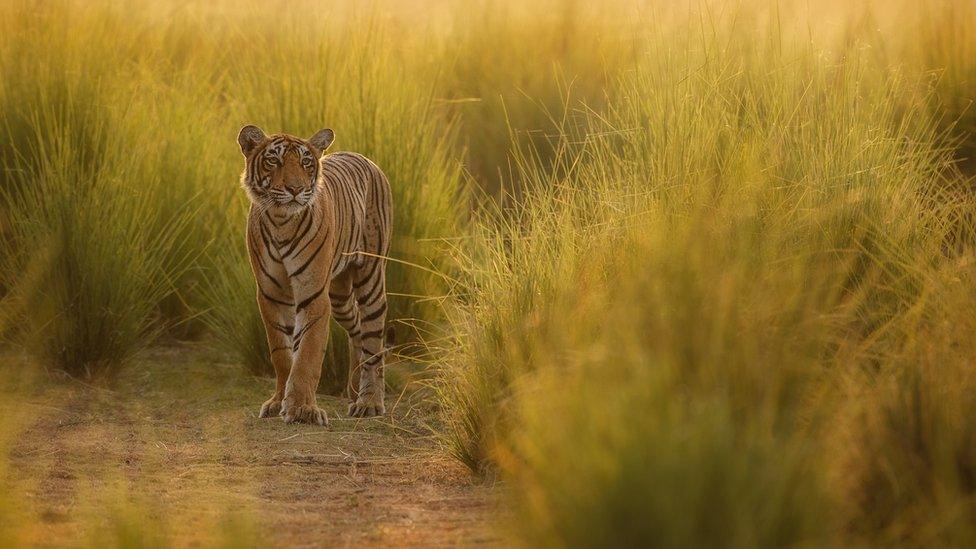Size matters when it comes to extinction risk
- Published
- comments

The large and the small are most at risk of extinction, on land and in water
The biggest and the smallest of the world's animals are most at risk of dying out, according to a new analysis.
Size matters when it comes to extinction risk, with vertebrates in the so-called "Goldilocks zone" - not too big and not too small - winning out, say scientists.
Action is needed to protect animals at both ends of the scale, they say.
Heavyweights are threatened mainly by hunting, while featherweights are losing out to pollution and logging.
"The largest vertebrates are mostly threatened by direct killing by humans," said a team led by Prof Bill Ripple of Oregon State University in Corvallis, US.
"Whereas the smallest species are more likely to have restricted geographic ranges - an important predictor of extinction risk - and be threatened by habitat degradation."
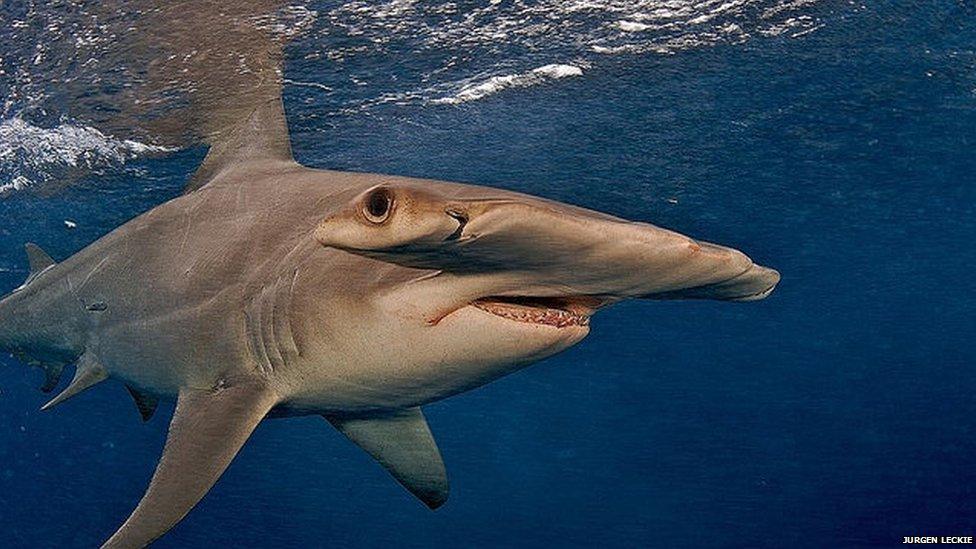
The great hammerhead shark is under threat from illegal fishing
The research adds to evidence that animals are dying out on such a scale that a sixth extinction is considered under way.
This has prompted efforts to determine the key drivers of extinction risk.
One clue is body size. Research on birds and mammals has shown that those with larger bodies are more likely to go extinct.
Yet, when the researchers made a data base of thousands of birds, mammals, fish, amphibians and reptiles at risk of extinction, they found disproportionate losses at the large and small ends of the scale.
"Surprisingly, we found that not only the largest of all vertebrate animal species are most threatened, but the very tiniest ones are also highly threatened with extinction," Prof Ripple told BBC News.
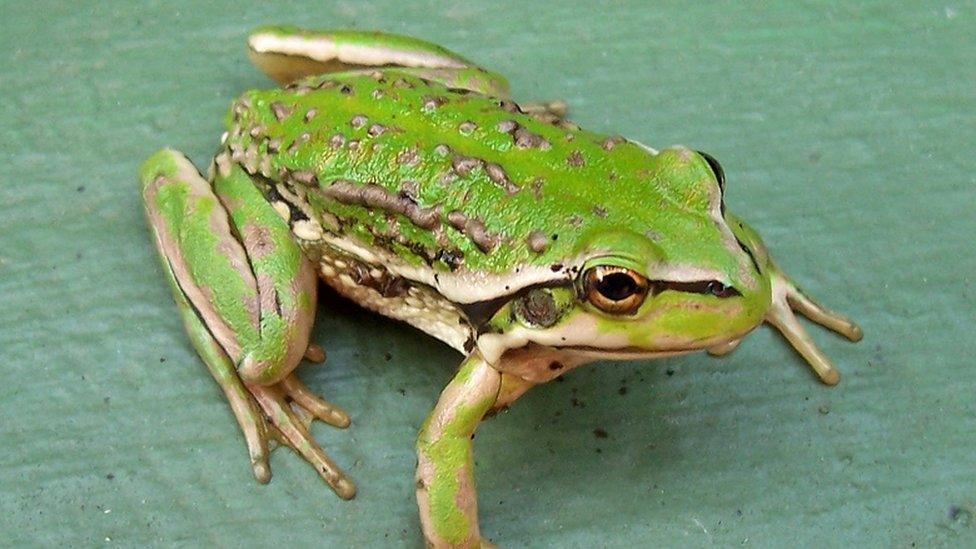
Warty swamp frog: This frog is believed to be in decline across much of its range
Large charismatic animals, such as elephants, rhinos and lions have long been the target of protection efforts.
However, fish, birds, reptiles and amphibians that are the giants of their kind, such as the whale shark, Somali ostrich and Chinese giant salamander, tend to be overlooked.
Meanwhile, small species at risk - such as frogs and shrews - receive very little attention.
"I think, for the smallest species, first of all we need to bring higher awareness to them, because the larger ones get a lot of attention, but the smaller ones get very little," said Prof Ripple.
In the study, researchers from the US, UK, Switzerland and Australia compared body mass and extinction risk for more than 25,000 vertebrate species.
Of these, around 4,000 are threatened with extinction, as assessed by the Red List of the International Union for the Conservation of Nature.
Vertebrates with the smallest and the largest bodies were found to be most at risk of disappearing, whether they were on land or living in oceans, streams or rivers.
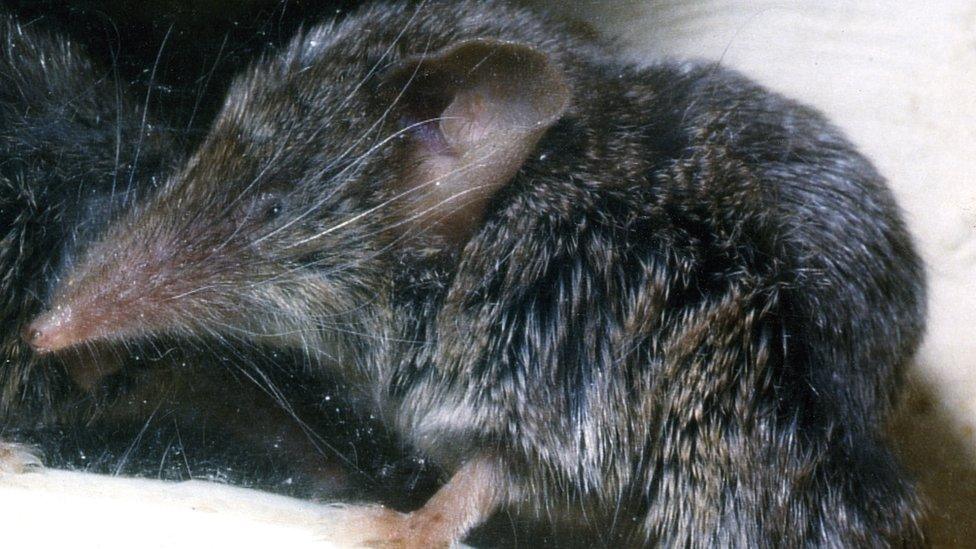
The Canarian shrew is a tiny endangered mammal living only on the Canary Islands
Threats facing the heaviest included:
Regulated and unregulated fishing
Hunting and trapping for food, trade or medicines
The lightest were mainly at risk from:
Pollution of lakes, streams and rivers
Farming
Logging of forests
Development.
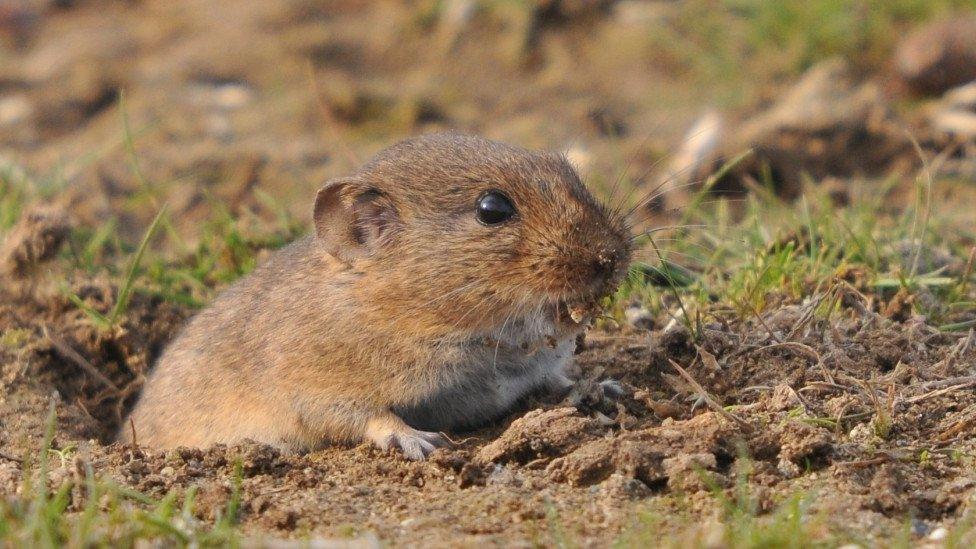
The Bavarian pine vole is thought to be critically endangered
The researchers say that while different approaches are needed for the conservation of large versus small species, there is an urgent need to step up efforts for both.
"Ultimately, reducing global consumption of wild meat is a key step necessary to reduce negative impacts of human hunting, fishing, and trapping on the world's vertebrates," they write in the journal, Proceedings of the National Academy of Sciences, external, which published the study.
"Indeed, based on our findings, human activity seems poised to chop off both the head and tail of the size distribution of life."
Extinction can be a natural process, affecting a handful of species each year.
However, estimates suggest the world is now losing species at hundreds of times the "background" rate.
Co-researcher Thomas Newsome of the University of Sydney in Australia said for large animals lessening the negative impacts of hunting, fishing and trapping was key.
"But it's ultimately slowing the human population growth rate that will be the crucial long-term factor in limiting extinction risks to many species," he said.
Follow Helen on Twitter, external.
- Published15 July 2017
